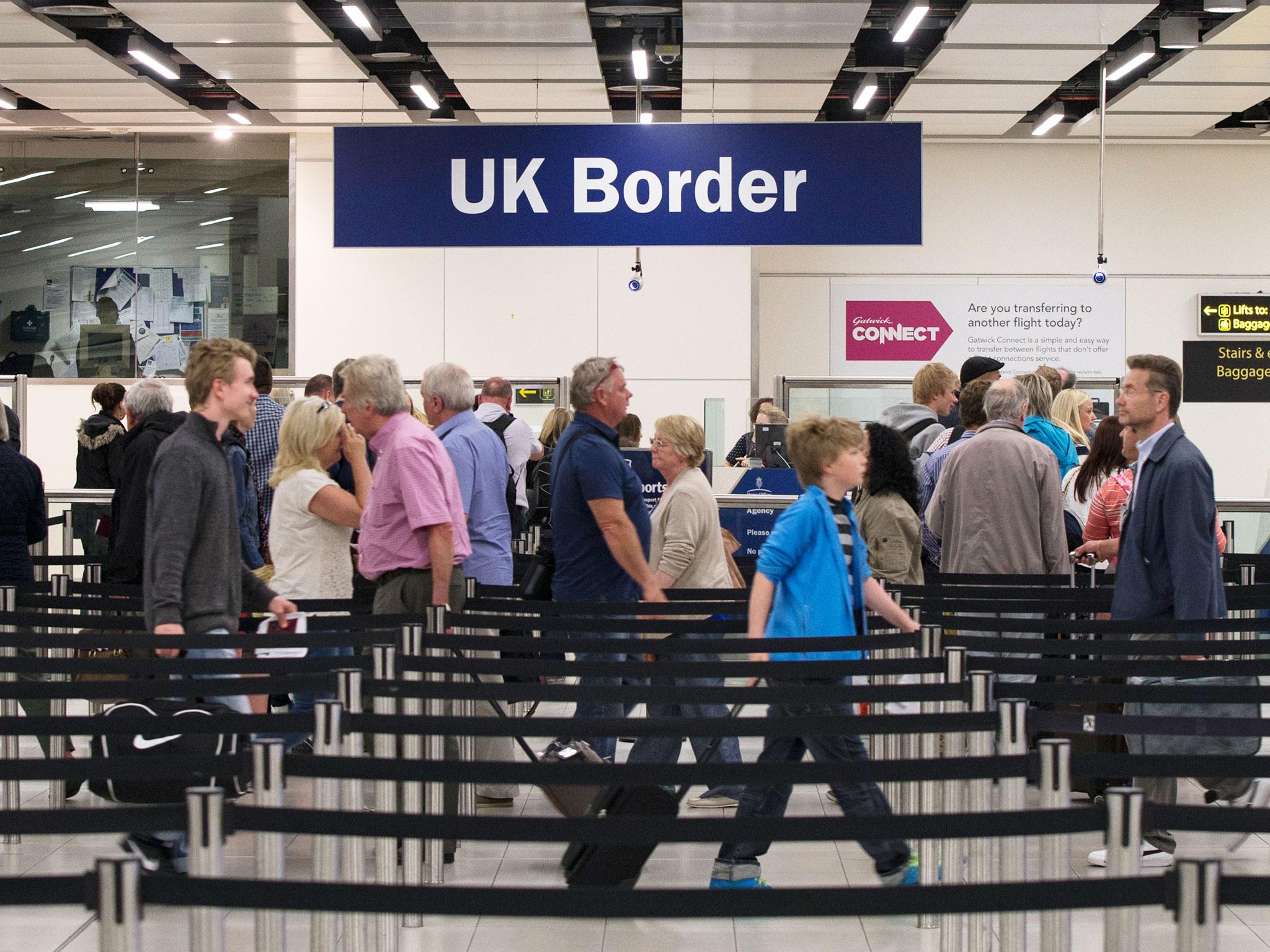EU net migration to UK at lowest level for 16 years after plummeting since Brexit vote
Government’s immigration target still not met after rise in immigration from outside EU

Your support helps us to tell the story
From reproductive rights to climate change to Big Tech, The Independent is on the ground when the story is developing. Whether it's investigating the financials of Elon Musk's pro-Trump PAC or producing our latest documentary, 'The A Word', which shines a light on the American women fighting for reproductive rights, we know how important it is to parse out the facts from the messaging.
At such a critical moment in US history, we need reporters on the ground. Your donation allows us to keep sending journalists to speak to both sides of the story.
The Independent is trusted by Americans across the entire political spectrum. And unlike many other quality news outlets, we choose not to lock Americans out of our reporting and analysis with paywalls. We believe quality journalism should be available to everyone, paid for by those who can afford it.
Your support makes all the difference.EU net migration to the UK is at its lowest level for 16 years after plummeting following the Brexit vote.
Figures from the Office for National Statistics (ONS) show the figure stood at 48,000 in the year to June, after 151,000 EU citizens left and 199,000 arrived.
The number is less than a quarter of the 219,000 peak seen in 2015 – a year before the EU referendum.
EU net migration has been falling steadily ever since, and is now at its lowest level since 2003 – before major expansions brought in countries including Poland and Romania.
Migration from outside the EU has been rising since the EU referendum, now standing at 229,000.
Overall, around 212,000 more people moved to the UK long term in the last year than left.
“Our best assessment using all data sources is that long-term immigration, emigration and net migration have remained broadly stable since the end of 2016,” a spokesperson for the ONS said.
“However, we have seen different patterns for EU and non-EU citizens.
“While there are still more EU citizens moving to the UK than leaving, EU net migration has fallen since 2016, driven by fewer EU arrivals for work. In contrast, non-EU net migration has gradually increased for the past six years, largely as more non-EU citizens came to study.”
Madeleine Sumption, director of the Migration Observatory at the University of Oxford, said reasons for falling EU migration include the falling value of the pound “making the UK less attractive, improving economic prospects in EU countries of origin, and potentially the political uncertainty of the prolonged Brexit process”.
Ms Sumption said the future of immigration trends was “uncertain” ahead of next month’s general election.
The Conservatives and the Brexit Party have committed to ending free movement and introducing an “Australian style” points-based system.
Labour has signalled that it would consider free movement as part of a negotiations on the future UK-EU relationship, while the Liberal Democrats would seek to stop Brexit and maintain free movement.
Sophie Wingfield, head of policy and public affairs at the Recruitment and Employment Confederation, said the figures showed “worrying trends in migration for work”.
“Our data has consistently shown a serious shortage of UK workers in many sectors, ranging from healthcare and engineering to hospitality and agriculture, and this has been getting worse since 2013,” she added.

“Meanwhile, the UK is becoming a less attractive destination for workers from overseas.
“Employers and recruiters need to be able to attract migrant workers to fill these vital roles.
“It is essential that we build a post-Brexit immigration system which is evidence-based and works for business, workers and the economy.”
The number of British people leaving the UK long term has also been accelerating, with net emigration rising from 43,000 in 2016 to 65,000 in the most recent year.
In the 12 months to June, 131,000 British people left the UK and 66,000 arrived.
“While the international migration of EU and non-EU citizens continues to add to the UK population, the long-term trend for British citizens is that more leave the UK than return to the UK,” the ONS said.
“Decisions to migrate are complex, and a person’s decision to move to or from the UK will always be influenced by a range of social and economic factors.”
Under Theresa May, the Conservative government had aimed to reduce net migration below 100,000, but the target has never been met.
The figures are classed as experimental estimates after the ONS admitted earlier this year it had been underestimating some EU net migration data since 2016.
Separate immigration figures published by the Home Office showed there had been 189,459 work-related visas granted in the year to September.
It was an 11 per cent rise on the previous year and the highest since 2008, when changes were made to the immigration system.
In the same period, there were 276,889 sponsored study visas granted, including those for children of applicants, which shot up 16 per cent on the previous year and is the highest level since 2011. Chinese nationals account for 43 per cent of such visas granted.
The majority of applicants want to study at UK universities, according to the figures.
Additional reporting by PA
Subscribe to Independent Premium to bookmark this article
Want to bookmark your favourite articles and stories to read or reference later? Start your Independent Premium subscription today.
Join our commenting forum
Join thought-provoking conversations, follow other Independent readers and see their replies
Comments